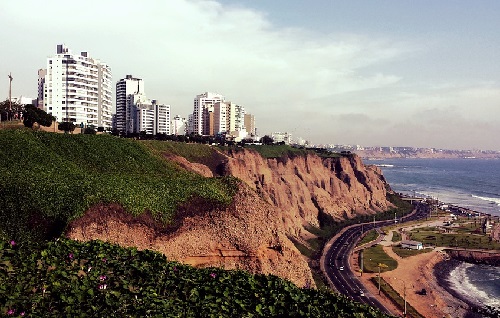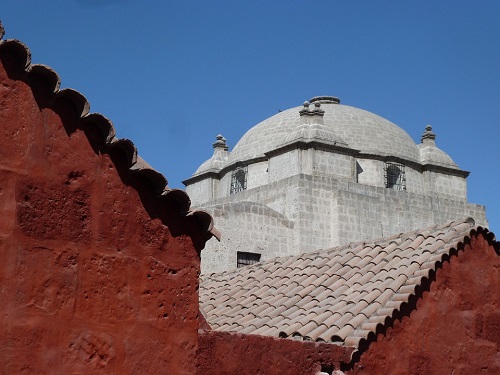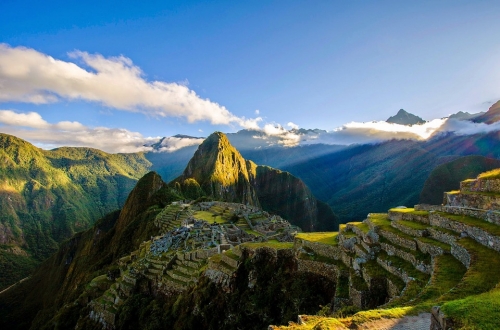The land of Machu Picchu makes an unusual but undeniably interesting expat destination. Visitors are enthralled by Peru’s scenic beauty and warm people. There are plenty of historical sites that give you a glimpse into this ancient South American country’s colorful past. Its warm weather and laidback yet affordable lifestyle are added benefits, especially for senior citizens who are looking for a good retirement spot. At the same time Lima, its cosmopolitan capital, has become a city of significant global importance with entrepreneurs and professionals from across the globe.Those who can afford it lead a lifestyle of fairly high standards in Peru, but be prepared to experience a bit of a culture shock when you arrive, due to the poverty and lack of modernized infrastructure. For example, there is no public transport system and you will have to look at private options to get from one place to another. Many of the locals make do without basic facilities, especially in the rural areas. So far, the extreme rich as well as the extreme poor have managed to coexist side by side, without many problems. This is even more evident in the larger cities like Lima and Arequipa.
A city to call home
There is a severe shortage of housing options across the country. This has forced less fortunate families to live in settlements along the edges of the cities. The outskirts of the larger metropolitan areas therefore often face the challenge of slum developments, so these neighborhoods are not recommended for expats. If you are planning to settle down in Peru, try to stay away from the rural areas too, as there are fewer housing options, career opportunities and cultural offerings available. This does not leave you with too many options except to look for accommodation in the main cities. The places with the highest expat populations include the following.
Lima
The Peruvian capital and the largest city in the country is home to more than 8 million residents. In spite of being the national business and cultural capital, its pace of life is comparatively slow. If you want to live close to calm, picturesque beaches, Lima is the place to be. The downside of living in the capital is its cost of living. While it is the 4th most expensive city in Latin America, most expats from North America as well as Europe find this city quite affordable. Neighborhoods like La Molino, Miraflores, San Borja, San Isidro and Santiago de Surco are very popular with foreigners, which is why they are more expensive. The more reasonable areas such as Magdalena and Surquillo may not give you unlimited accesses to cable TV, broadband internet and hot water around the clock.
Arequipa
Commonly referred to as the “White City”, Arequipa is located in the southern part of the country and has a population of almost 850,000 residents. Being Peru’s second most industrialized city, it has become one of the most essential commercial centers in the country. Because of its size, getting from one place to another is quite easy. Moreover, the weather is pleasant and the cost of living is economical.
Cuzco
The capital of the ancient Inca Empire has become a famous tourist destination, receiving at least 2 million visitors every year. The local population is quite small, at a little over 350,000 inhabitants. In spite of being very popular with tourists, Cuzco has relatively cheap housing options compared to Lima.
Trujillo
Situated in the northwest part of the country with around 920,000 inhabitants, this city is called the Capital of Everlasting Spring, the Capital of Marinera (a traditional Peruvian dance) and the Capital of Culture. Many surfers and water-lovers prefer to reside in Trujillo, which is quite cheap to live in.
Iquitos
The largest city in the Peruvian rainforest has a population of more than 450,000 people. Many of the neighborhoods in Iquitos have been modeled to reflect Amazonian, European or Bohemian atmospheres. Because of the number of tourists and visitors this city gets each year, its demography is the most multi-ethnic in the region. Housing options are quite good and tend to be cheaper than Lima.
It would be a good idea to spend at least a few weeks in a city before you make the decision to settle down in it.
Residential properties
Most expats live in the bigger cities, where space is a challenge. The residents therefore tend to opt for apartment style houses. However, apart from the high-rise buildings, you can also choose to live in smaller suburban housing or a single-family home.
You will find a number of residential complexes with a range of apartments and houses, mainly in the outskirts. These come with a wide range of amenities and are ideal for foreigners, who are looking to settle down away from the hustle and bustle of the city.
In most cases, the houses and apartments for rent are unfurnished; they do not even include kitchen appliances and the monthly rent isn’t likely to cover the cost of utilities. If you are willing to pay a higher price, you will be able to find luxurious furnished accommodation too.
Finding a property
Like in any other country, the best way to go about your house-hunting quest is by contacting a real estate agent. A local representative will not only help you get what you are looking for, but will also guide you through the entire rental procedure, which is likely to be quite different from what you are used to. This step is all the more important if you are not fluent in Spanish.

Looking at the real estate section of the local newspapers can be quite useful, though most people today rely on online resources. You can type your requirements into any search engine to see what is available. Some of the most popular online resources among the expat community are Craigslist, Immobilaria and Compra-venta. These sites are in Spanish but can be easily translated to English or your language of preference. Use the filters provided to narrow down your search as far as possible.
Price ranges
While the residents may complain about how expensive accommodation in Lima is, outsiders usually find the city fairly reasonable in terms of housing prices. According to the latest statistics, you are likely to pay something in the range of the following prices, depending on the neighborhood and state of the property:
• A studio apartment (around 40 sq. meters) in the heart of the city: US $ 400
• A studio apartment (around 40 sq. meters) outside of the main city: US $ 300
• A 1-bedroom apartment (around 75 sq. meters) in the heart of the city: US $ 600
• A 1-bedroom apartment (around 75 sq. meters) outside of the main city: US $ 400
• A 2-bedroom apartment (around 120 sq. meters) in the heart of the city: US $ 900
• A 3-bedroom apartment (around 200 sq. meters) in the heart of the city: US $ 1300
• A 3-bedroom house (around 200 sq. meters) outside of the main city: US $ 800
• A 4-bedroom apartment (around 425 sq. meters) in the heart of the city: US $ 3000
These amounts are only indicative of the monthly rent for unfurnished properties and are likely to be much higher if the house comes with furniture, electronics and kitchen appliances. Be ready to pay at least US $ 100 more towards your utility costs each month.
Lease conditions
Rental agreements in Peru safeguard the interests of the landlords. It is therefore best for you to negotiate the price with the owner before you sign on the dotted line. Also, never agree to rent a place before carrying out a thorough inspection of the premises. Very often, the pictures shown online are not the same as what the house or apartment really looks like. Unfortunately, little can be done after the lease is signed by both the parties.
There are mainly two types of contracts for rental properties: fixed-term and indefinite-term.
Fixed-term or time-limited contracts can be drawn up for a maximum duration of 10 years. However, if the property is owned by the Peruvian state or an incapacitated citizen, the limit drops down to 6 years.
Like the name suggests, the indefinite-term contract can be broken by either of the parties, as long as the stipulated notice is given. By default, people are expected to serve a 1-month notice prior to the date of departure. People are free to decide on a different notice period, as long as it is mentioned in the contract.

The contract will be signed when you pay the agreed deposit amount, along with a month’s rent in advance and post-dated checks for the rest of the payments. Do keep in mind that the deposit is refunded when you vacate the house but you will not earn any interest on it.
As a tenant, you are liable to return the property in the same condition that it was given to you once the contract comes to an end. The owner has the right to claim for compensation in case this is not done.
If the parties wish to renew an expired contract, they have to go through the whole procedure again. Acting like the agreement is still in force does not imply automatic renewal.
According to Peruvian law a landlord has to reimburse the tenants for any necessary and useful improvements they have made to the property during the term of their contract. Necessary improvements can be described as an enhancement to the premises, with the purpose of preventing any damage or deterioration. Useful improvements aren’t really required but increase the overall value of the property. However, it is important to seek the landlord’s approval before making any changes to the house. Your landlord also has the right to insist that any improvements you make will not be reimbursed.
Eviction
As soon as the contract ends, the tenant has to return the property to the owner. According to the laws of this country, a landlord has the right to get a tenant evicted if the agreement is terminated for these reasons:
• Expiry of the term
• Lack of payments
• Subleasing the premises
• Violating other terms that have been agreed upon
• Using the residential premises for commercial or illegal purposes.
Please keep in mind that eviction lawsuits tend to drag on for several months in Peruvian courts. However, in the recent past, a new regime was adopted by the authorities under the Legislative Decree N 1177. This new law allows for “express eviction” of a tenant who has not vacated the property in spite of repeated requests.
The new regime also gives landlords the right to get an occupant evicted by means of the “Unique Procedure of Eviction”. In this case, the tenant is sued with a Literate Justice of the Peace. The judge gives the tenant no more than 5 working days to vacate the property, or establish that the contract signed is still in effect. However, to claim the benefits of this regime, the owner has to fill in the Form of Property Lease Destined for Housing or Formulario Único de Arrendamiento de Inmueble Destinado A Vivienda (FUA). This has to be attested by a notary, along with the lease.
The whole procedure is drawn-out and complicated. It is essential to seek the advice of a good lawyer to deal with eviction notices.
To sum it all up, finding a place to live in Peru can be a challenge and getting good accommodation at a reasonable price in the large cities is fairly difficult. It is therefore best to consult a licensed realtor locally, to help you with your search and guide you through the rental procedure. A good agent will also conduct an inspection of the property before signing the agreement.
Have you rented property in Peru? Share your experience in the comments below, or answer the questions here to be featured in an interview!

